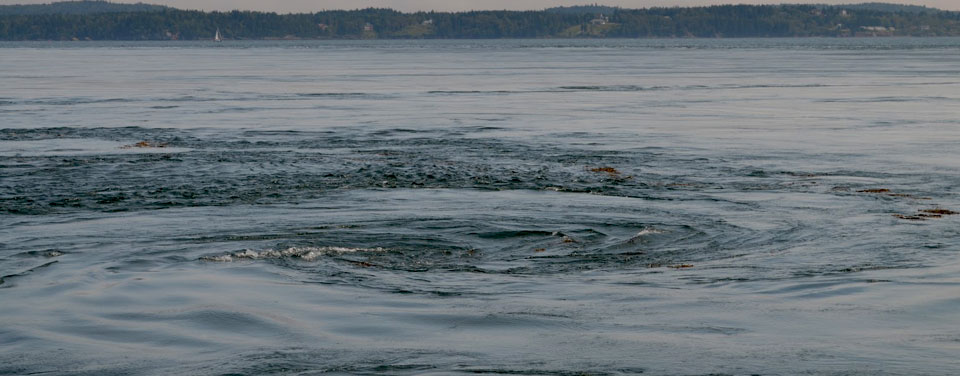What is Old Sow?
Old Sow is the name of the Western Hemisphere's largest whirlpool.

While the turbulent water of Old Sow can be dangerous to small-craft mariners, its swirling motion has a positive environmental effect. It causes nutrients and tiny sea creatures normally found in the bay’s colder, deeper waters to rise to the surface. This process, called upwelling, ensures good eating for the resident fish and seabirds.
When the tide comes in from the Bay of Fundy, located off the Atlantic Coast between the State of Maine and the Province of New Brunswick, a tremendous amount of ocean water, called a current, flows swiftly into a confined area called the Western Passage before emptying upriver into Passamaquoddy Bay. After making a sharp right turn to the north and traversing a deep trench, flowing past an underwater mountain, and encountering several countercurrents, a portion of the current "pinches off" to form the huge circular current called Old Sow, and, often, several smaller ones, nicknamed “piglets.” Circular currents of all sizes are commonly known as whirlpools, vortexes, eddies, and gyres.
Old Sow varies in size but has been measured at more than 250 feet in diameter, about the length of a soccer field. While the turbulent water can be dangerous to small-craft mariners — some of whom have barely escaped a 12-foot drop into the Sow’s gaping maw — its swirling motion has a positive environmental effect. It causes nutrients and tiny sea creatures normally found in the bay’s colder, deeper waters to rise to the surface. This process, called upwelling, ensures good eating for the resident fish and seabirds.
So why is the whirlpool called "Old Sow?" According to folklore, the name refers to the "grunting" noise — which sounds like hungry pigs slurping up their slop — made by the giant churning gyre. "Sow" may also be a mispronunciation of the word "sough" (pronounced suff), which means "sucking noise" or "drain."
Social